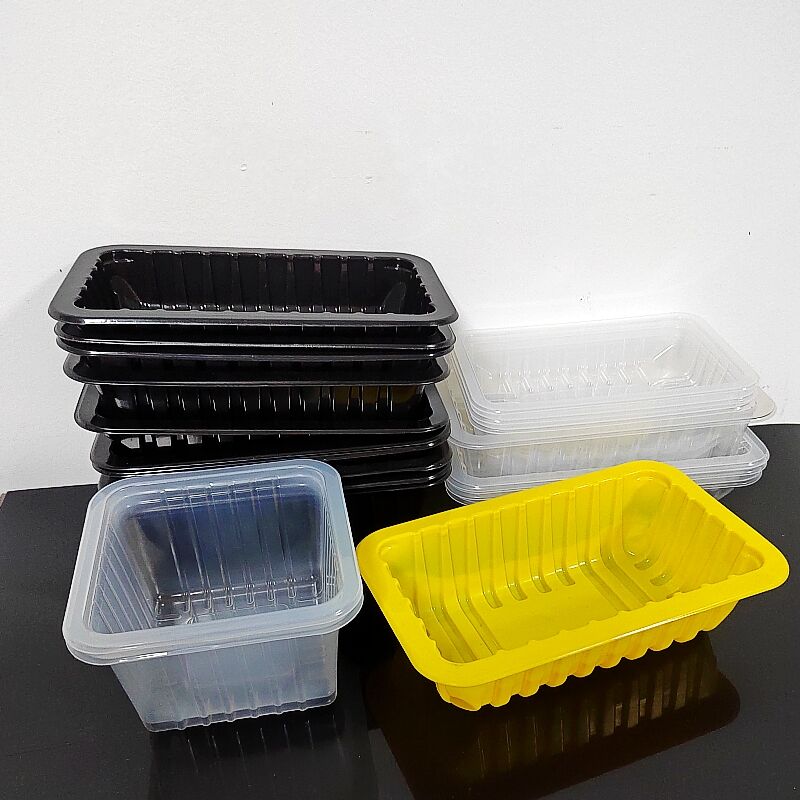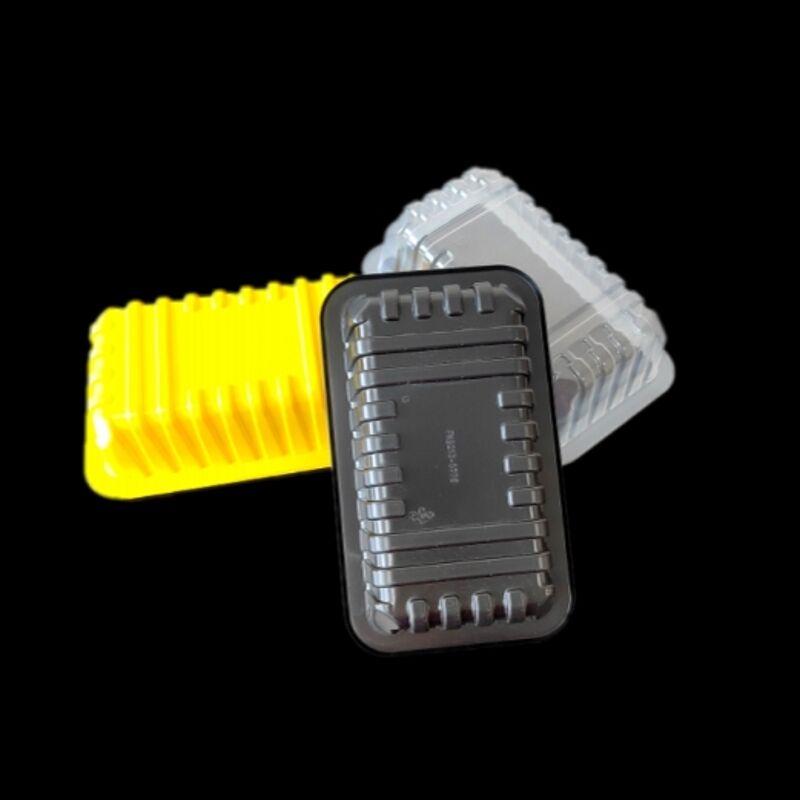What Are the Best Types of Packaging for Soft Fruits?
Introduction to Soft Fruit Packaging
Soft fruits such as strawberries, raspberries, blueberries, cherries, and blackberries are among the most delicate produce items in the global food supply chain. Their thin skins and high moisture content make them especially vulnerable to bruising, microbial spoilage, and dehydration. As a result, effective Packaging plays a critical role in protecting quality, extending shelf life, and ensuring consumer satisfaction. In addition to protection, Packaging must also meet sustainability goals, appeal to consumers visually, and support efficient distribution from farm to market. Choosing the best types of Packaging for soft fruits requires balancing functionality, cost, sustainability, and consumer expectations.
The Challenges of Soft Fruit Packaging
Fragility of Soft Fruits
Soft fruits bruise easily during harvesting, handling, and transportation. Even minor pressure can lead to visible damage, reducing market value and consumer appeal. Packaging must provide cushioning and protection against compression.
High Moisture Content
The high water content of soft fruits makes them susceptible to mold growth and bacterial contamination. Proper Packaging must manage moisture levels, provide ventilation, and sometimes incorporate antimicrobial properties to keep fruit fresh.
Short Shelf Life
Unlike harder produce, soft fruits typically have a very short post-harvest life. Without effective Packaging, they quickly lose their freshness, flavor, and nutritional quality.
Consumer Expectations
Modern consumers expect Packaging that not only protects but also presents fruit attractively. Clear visibility, eco-friendliness, and convenience in opening and resealing are critical factors influencing purchasing decisions.
Key Functions of Packaging for Soft Fruits
Protection
The primary purpose of Packaging is to protect fruits from physical damage, microbial contamination, and environmental stressors. Cushioning, structure, and tamper resistance are crucial design considerations.

Shelf Life Extension
Good Packaging should slow down spoilage processes by controlling moisture, reducing oxygen exposure, and sometimes using modified atmosphere technologies to preserve freshness.
Sustainability
With rising awareness of environmental issues, sustainable Packaging has become a priority. Materials that are recyclable, biodegradable, or reusable are increasingly preferred by both consumers and regulators.
Branding and Marketing
Attractive Packaging doubles as a marketing tool. Labels, colors, and shapes help brands stand out while providing necessary information about the produce.
Common Types of Packaging for Soft Fruits
Plastic Clamshell Containers
Plastic clamshells are one of the most widely used Packaging solutions for soft fruits. Made from PET or other clear plastics, they allow consumers to view the fruit while offering excellent protection. Ventilation holes are often included to maintain airflow and prevent condensation. Their resealable design adds convenience, and their stackability benefits retailers.
Punnets with Lidding Film
Punnets are small, lightweight trays made of plastic, cardboard, or compostable materials. They are sealed with breathable lidding films that help regulate gas exchange, preventing fruit from sweating while extending shelf life. These are often used for strawberries and blueberries.
Cardboard Trays and Cartons
Cardboard Packaging provides a more sustainable alternative to plastic. With advancements in coatings, cardboard trays can now resist moisture while maintaining strength. Cardboard cartons with windows combine eco-friendliness with product visibility. They are suitable for farmers aiming to reduce plastic use.
Biodegradable and Compostable Packaging
Plant-based plastics, molded pulp, and compostable films are increasingly used in soft fruit Packaging. They provide the same protective qualities as conventional plastics while aligning with consumer demand for eco-friendly products.
Modified Atmosphere Packaging (MAP)
MAP uses sealed trays or pouches filled with a carefully controlled mixture of gases such as oxygen, carbon dioxide, and nitrogen. This slows microbial growth and oxidation, extending shelf life. MAP is ideal for export markets where fruits must travel long distances.
Flexible Packaging and Pouches
Resealable pouches made from plastic laminates or paper composites are another option. They are lightweight, easy to transport, and attractive to consumers looking for convenience. However, they must include venting or micro-perforation to prevent condensation.
Factors to Consider When Choosing Packaging for Soft Fruits
Type of Fruit
Different fruits have different levels of delicacy and moisture release. For example, raspberries are extremely fragile and benefit from rigid clamshells, while blueberries can tolerate softer Packaging formats.
Supply Chain Conditions
Packaging must withstand the rigors of transport, cold storage, and retail display. Long supply chains often require more durable and protective Packaging than short, local distribution.
Shelf Life Requirements
For domestic markets, simple cardboard or punnet Packaging may suffice. For exports, more advanced systems like MAP or clamshells are necessary to preserve freshness for extended periods.
Sustainability Goals
Brands must balance durability with environmental responsibility. Many companies are transitioning from traditional plastics to recyclable PET, paper-based Packaging, or biodegradable options.
Consumer Convenience
Packaging should be easy to open, resealable when possible, and designed for storage in home refrigerators. Features like handles or tear-off lids enhance usability.
Advantages of Using Proper Packaging for Soft Fruits
Reduction in Food Waste
By preventing bruising and extending shelf life, effective Packaging reduces the amount of fruit that spoils before reaching consumers.
Higher Market Value
Attractive Packaging enhances the perceived quality of the product, allowing producers to command higher prices.
Compliance with Regulations
Food safety and environmental standards often require specific Packaging features such as tamper evidence and recyclability. Choosing the right Packaging ensures compliance.
Brand Differentiation
Innovative designs, sustainable materials, and clear visibility of the fruit help brands stand out in competitive retail markets.
Future Trends in Soft Fruit Packaging
The future of Packaging for soft fruits is closely tied to sustainability and innovation. Expect to see greater use of mono-material plastics that are fully recyclable, compostable trays and films made from agricultural waste, and smart Packaging technologies that monitor freshness. Digital labeling and QR codes may also become more common, allowing consumers to trace the origin of their fruit and access detailed information about production methods.
Conclusion
The best types of Packaging for soft fruits are those that balance protection, freshness, sustainability, and consumer convenience. Options such as plastic clamshells, punnets with lidding film, cardboard trays, biodegradable containers, and modified atmosphere Packaging all serve specific roles depending on the type of fruit and distribution requirements. By carefully selecting the right Packaging solution, producers and retailers can reduce waste, maintain product quality, meet sustainability goals, and enhance customer satisfaction. As consumer preferences and regulatory landscapes evolve, innovations in sustainable and smart Packaging will continue to shape the future of the soft fruit industry.
FAQ
Why is Packaging important for soft fruits?
Because it protects delicate fruits from bruising, maintains hygiene, and extends shelf life while appealing to consumers.
What is the most common Packaging type for strawberries?
Plastic clamshells and punnets with breathable lidding films are widely used for strawberries.
Are cardboard trays suitable for soft fruit Packaging?
Yes, with moisture-resistant coatings, cardboard trays are an eco-friendly alternative to plastic.
How does modified atmosphere Packaging work for fruits?
It adjusts the balance of gases inside the package to slow microbial growth and oxidation, extending freshness.
Can soft fruit Packaging be sustainable?
Yes, biodegradable plastics, molded pulp trays, and recyclable PET are all sustainable options increasingly used in the industry.
Do consumers prefer transparent Packaging?
Yes, transparency allows shoppers to inspect fruit quality before purchase, increasing trust and satisfaction.
What type of Packaging is best for exports?
Durable options such as clamshells or MAP systems are best for long-distance transportation.
Are resealable pouches good for soft fruits?
Yes, they offer convenience and portability but must be designed with ventilation to avoid condensation.
How does Packaging affect food waste in soft fruits?
Proper Packaging reduces bruising and spoilage, significantly cutting down waste throughout the supply chain.
What future trends are shaping soft fruit Packaging?
Sustainable materials, smart freshness indicators, and recyclable mono-material designs are key trends shaping the future.
Table of Contents
- What Are the Best Types of Packaging for Soft Fruits?
- Introduction to Soft Fruit Packaging
- The Challenges of Soft Fruit Packaging
- Key Functions of Packaging for Soft Fruits
- Common Types of Packaging for Soft Fruits
- Factors to Consider When Choosing Packaging for Soft Fruits
- Advantages of Using Proper Packaging for Soft Fruits
- Future Trends in Soft Fruit Packaging
- Conclusion
-
FAQ
- Why is Packaging important for soft fruits?
- What is the most common Packaging type for strawberries?
- Are cardboard trays suitable for soft fruit Packaging?
- How does modified atmosphere Packaging work for fruits?
- Can soft fruit Packaging be sustainable?
- Do consumers prefer transparent Packaging?
- What type of Packaging is best for exports?
- Are resealable pouches good for soft fruits?
- How does Packaging affect food waste in soft fruits?
- What future trends are shaping soft fruit Packaging?

